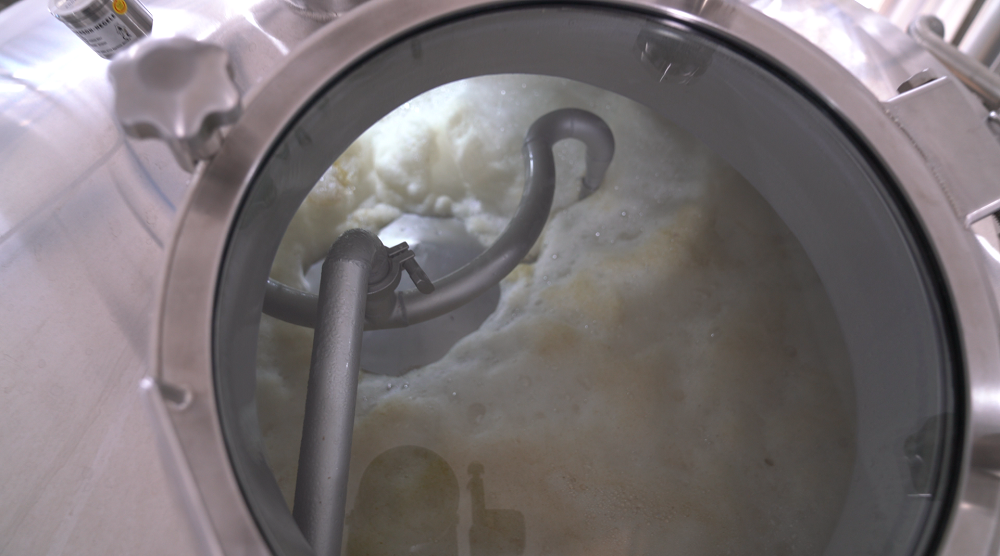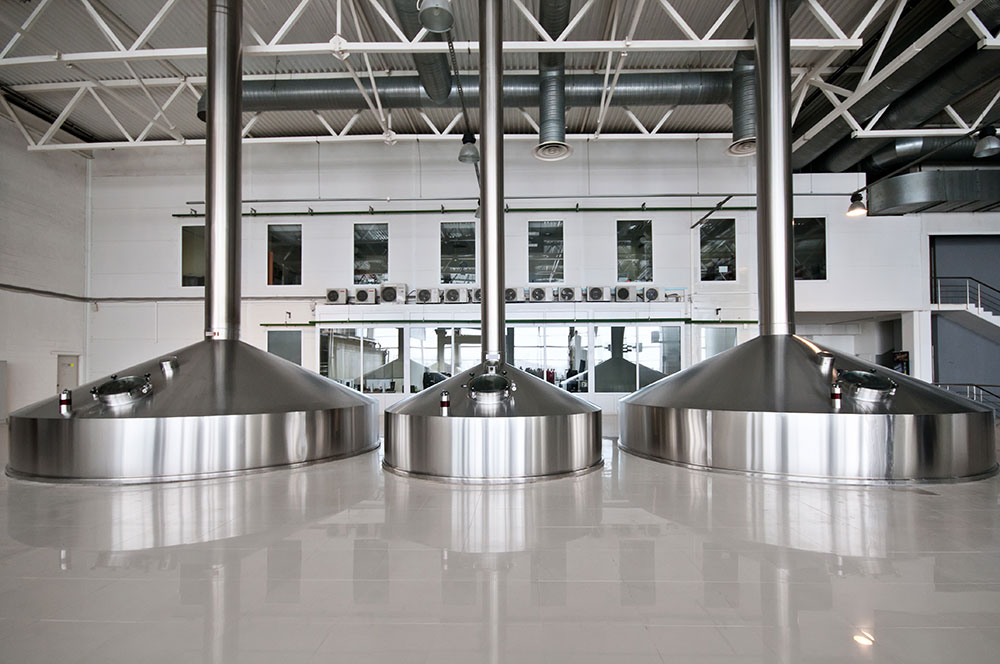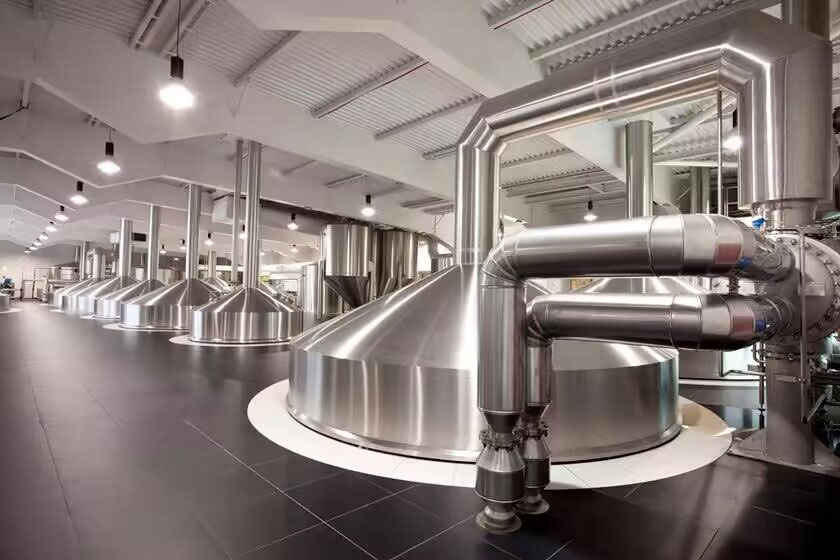Today, Tiantai’s editor wants to talk to all beer brewers about: the key step in the brewing process – wort boiling. After the wort is filtered, the mixed wort is heated and boiled in the boiling pot to evaporate excess water, and then hops are added. After complex physical and chemical changes occur at high temperatures, a wort that meets the process requirements is obtained. This process is called wort boiling. Wort boiling can be divided into three stages: preheating, initial boiling, and evaporation. Preheating can be done after the filtered wort has submerged the surface of the heater, or it can be started after the first washing of the leaves. At this time, the heating steam pressure is relatively low, so that the wort temperature is kept between 75 and 78°C; initial boiling is the beginning of wort boiling. At this time, the evaporation is not too large, and the washing process is still in progress. This stage is to prepare for evaporation. Generally, the initial boiling time will not exceed 30 minutes. Once the dregs are washed, evaporation can be carried out immediately. Evaporation is the most important stage of wort boiling. At this time, the heating steam is turned to the maximum to keep the wort in a violent boiling state. The evaporation effect has a significant impact on the quality of the wort.
Normal pressure boiling
Normal pressure boiling is our most common traditional boiling method. It refers to open boiling. The pressure in the pot is the same as the external atmospheric pressure. This traditional open boiling method makes it difficult to recover waste heat and cannot make good use of secondary steam. Internal boiling is a boiling method in which the tube-type heater is installed in the boiling pot. Steam enters the tube, and the wort exchanges heat between the tubes. The steam is condensed and the wort is heated. Relying on the temperature difference between the upper and lower parts of the wort as the driving force, the wort is tumbled up and down, which plays a stirring role and improves the heat transfer effect. To avoid foam overflow, an umbrella cover can be set on the upper part of the heater. The internal boiling temperature is generally 105~107℃, and the boiling time is about 90 minutes. External boiling is a boiling method in which the heater is placed outside the boiling pot. One external heater can be used with 2~3 boiling pots at the same time. The wort is circulated by a pump, 8~10 times per hour. After being heated by the external heater, the wort enters the boiling pot in a tangential direction or directly enters the conduit with an umbrella cover in the center of the boiling pot. The flow rate of wort through the external heater can reach 2.5m/s. Compared with the internal boiling, the heat transfer effect is good. The external boiling temperature can reach 107~110℃, and the boiling time can be shortened to 70 minutes.

Low-pressure boiling
Low-pressure boiling is also called the external heating boiling method. It is boiled under a pressure of 0.11~0.12Mpa. The boiling temperature can reach 120℃. It is combined with an external shell-and-tube or thin-plate heat exchanger and a wort boiling pot. One external heater can be used with 2~3 boiling pots at the same time. The wort is pumped out of the boiling pot, heated to 102~110℃ by a heat exchanger under 0.20~0.25KPa, and then pumped back into the boiling pot. It can be circulated 7~12 times. The boiling time is about 60~70 minutes, and the boiling temperature is controlled by the throttle valve at the outlet of the heat exchanger. When the wort is pumped back into the boiling pot, the pressure drops sharply, and the water evaporates quickly, achieving the purpose of wort concentration. The advantage is that due to the increase in temperature, the protein coagulation effect is good (the soluble nitrogen content of the wort can be reduced to less than 2.0mg/100mL), the boiling time can be shortened by 20%~30% (about 50~70 minutes), so energy can be saved, and the secondary steam generated can be recycled.
Steam heat recovery
The water vapor generated when the wort is boiled is called exhaust steam or secondary steam, and the exhaust steam contains a lot of heat energy. Every 1 kg of 100℃ hot water converted into 100℃ steam consumes about 2260KJ of heat energy. If the exhaust steam is directly discharged into the atmosphere from the exhaust pipe, it will not only cause odor pollution to the surrounding environment but also waste a lot of energy. Therefore, we should recover this part of heat energy as much as possible.
Methods of recovering heat energy
Using the secondary steam condenser to recover the heat energy of exhaust steam is not only low in investment cost, but also easy to operate. This technology is very common in practical applications. It is installed at the steam outlet of the boiling pot; another method of recovering the heat energy of exhaust steam is to use eam compression system to compress the exhaust steam into 0.135MPa overpressure steam so that the exhaust steam temperature is increased and reused to heat the wort. By using the exhaust steam compressor, a lot of steam can be saved, but the use of the compressor also consumes a lot of electricity. The exhaust steam compression system can be installed in the existing wort boiling equipment system, especially for those breweries that do not want to use low-pressure boiling. More suitable; The brewery’s saccharification chamber will produce a large amount of low-enthalpy hot water, the amount is much higher than the demand, resulting in a large amount of heat energy loss. What the saccharification room needs is high enthalpy water, that is, high-temperature water or superheated water. Since low enthalpy hot water does not meet the process requirements, we have to consume steam to heat it, which is a serious waste of energy. Therefore, the use of a low-pressure boiling system with energy storage can effectively solve this problem and greatly reduce the energy consumption of the saccharification room.
Each boiling technology has its own characteristics and applicable scenarios. No matter which method you choose, it must be combined with the beer flavor you pursue, the actual production scale, and the consideration of energy efficiency. Tiantai’s craft beer equipment models are complete and suitable for breweries of different sizes. If you have any needs, please contact us.



